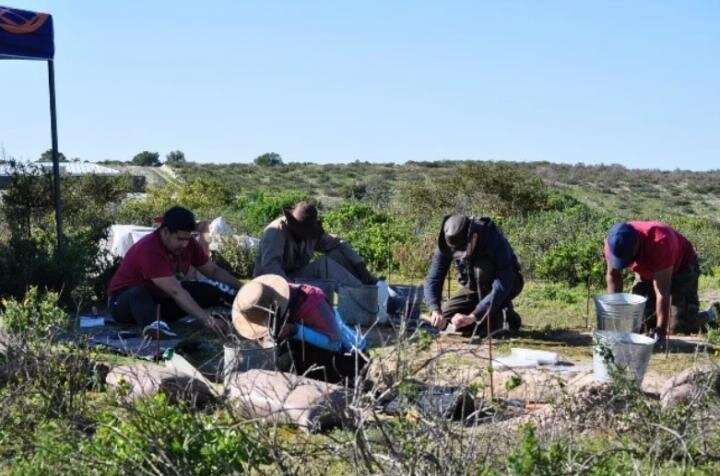Science
Related: About this forumNew research reports discovery of 5-million-year-old honey badger-like animal
NOVEMBER 2, 2020
by Taylor & Francis

Five million years ago, dangerous carnivores - such as giant wolverines and otters, bears, sabertooth cats,
and large hyaenids - prowled the West Coast of South Africa. Today we can confirm that, among them,
fearlessly roamed a smaller relative of the living honey badger. Credit: Romala Govender
Five million years ago, dangerous carnivores—such as giant wolverines and otters, bears, sabertooth cats, and large hyaenids—prowled the West Coast of South Africa. Today we can confirm that, among them, fearlessly roamed a smaller relative of the living honey badger.
New research published in Journal of Vertebrate Paleontology by palaeontologists Alberto Valenciano Vaquero (Iziko Museums of South Africa, the University of Cape Town, South Africa, and University of Zaragoza, Spain) and Romala Govender (Iziko Museums of South Africa, Research and Exhibitions) report on the discovery of a relative of the living honey badger from the early Pliocene locality of Langebaanweg (West Coast Fossil Park, South Africa). Besides this honey badger-like animal, this 5.2 million years locality has yielded one of the world's richest and best-preserved mammal assemblages of this time period, including saber-toothed cats, bears, hyaenas, jackals, mongoose, as well as relatives of the living giraffes, elephants, rhinoceroses, wild pigs, and a variety of birds, fishes and marine mammals.
Living honey badger (also known as ratel) (Mellivora capensis) belong to the mustelid family which includes weasels, otters and badgers. They live in most of sub-Saharan Africa and East Asia, including India. Despite its relatively small size (9-14 kg), honey badgers are one of the most aggressive and fierce animals in the world. "Even large carnivores, such as leopards, hyenas, and lions stay out of their way" says Valenciano, lead author of this research. Honey badgers are equipped with sharp teeth and long claws to help capture prey, but they also feed on berries, roots and bulbs, insects and small vertebrates.
The extinct honey badger from Langebaanweg (Mellivora benfieldi) was originally described by Brett Hendey more than 40 years ago and was based on a few fragmented mandibles. "The new honey badger fossils we describe triple the number of known fossils and gives us a unique glimpse into its lifestyle and relationship to other similar mustelids. These new fossils demonstrate that this South African species is distinct from the late Miocene forms from Central Africa (Howellictis) and East Africa (Erokomellivora), as well as from the extant honey badger" says Valenciano.
More:
https://phys.org/news/2020-11-discovery-million-year-old-honey-badger-like-animal.html
